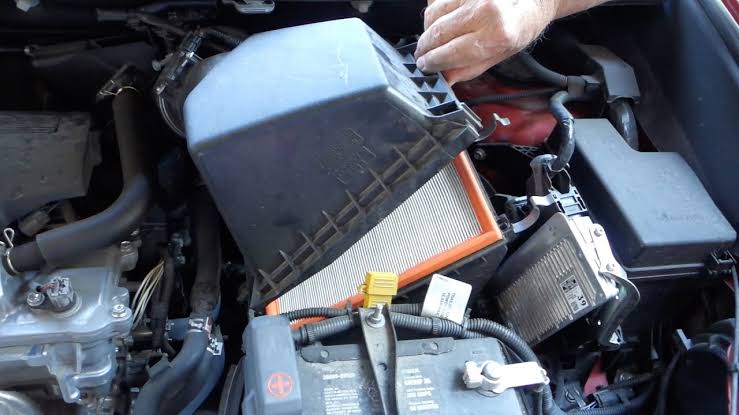In the world of compact SUVs, the Toyota RAV4 stands out for its reliability, versatility, and adventurous spirit. Ensuring its engine breathes clean air is a crucial task, entrusted to the air filter. In this blog, we’ll explore everything you need to know about the air filter in the Toyota RAV4, including its function, types, maintenance tips, common issues, and replacement guidelines, ensuring your RAV4 continues to roam the roads with optimal performance and efficiency.
Understanding the Air Filter in the Toyota RAV4
Function:
The air filter in the Toyota RAV4 plays a vital role in the vehicle’s engine performance by filtering out contaminants and debris from the air before it enters the engine intake system. It prevents dirt, dust, pollen, and other particles from reaching the engine cylinders, ensuring clean air for combustion and protecting engine components from damage and wear.
Types of Air Filters:
Toyota RAV4 vehicles may feature different types of air filters, including:
- Paper Air Filters: Traditional paper air filters are made of pleated filter paper housed in a plastic or metal frame. They offer effective filtration and are typically replaced during routine maintenance intervals.
- High-Flow Air Filters: High-flow air filters, such as those made of cotton gauze or synthetic materials, offer improved airflow and filtration efficiency compared to traditional paper filters. They may require less frequent replacement and offer enhanced performance benefits.
Common Issues with Air Filters
Clogging:
Over time, the air filter in the Toyota RAV4 can become clogged with dirt, dust, and debris, restricting airflow to the engine. This can result in reduced engine performance, fuel efficiency, and acceleration, as well as increased emissions and engine wear.
Decreased Fuel Efficiency:
A dirty or clogged air filter can cause the engine to run rich, resulting in decreased fuel efficiency and increased fuel consumption. This can lead to higher operating costs and reduced overall vehicle performance.
Engine Misfires:
A severely clogged air filter can disrupt the air-fuel mixture ratio, leading to engine misfires, rough idling, and poor acceleration. This can result in drivability issues and increased emissions during operation.
Maintenance Tips for Air Filters
Regular Inspections:
Inspect the air filter in your Toyota RAV4 regularly for signs of dirt, debris, or clogging. Check the condition of the filter element and housing, as well as any seals or gaskets, for damage or deterioration.
Cleaning:
If your Toyota RAV4 is equipped with a reusable or high-flow air filter, follow the manufacturer’s instructions for cleaning and maintenance. Use a mild detergent and water solution to clean the filter element, and allow it to dry completely before reinstalling.
Replacement:
Replace the air filter in your Toyota RAV4 according to the manufacturer’s recommended maintenance schedule. Consider replacing the air filter more frequently if you frequently drive in dusty or dirty conditions or notice reduced engine performance.
Replacement Guidelines for Air Filters
Signs for Replacement:
Replace the air filter in your Toyota RAV4 if you notice any of the following signs:
- Reduced engine performance or acceleration
- Decreased fuel efficiency or increased fuel consumption
- Engine misfires, rough idling, or hesitation during acceleration
Replacement Procedure:
- Locate the Air Filter Housing: The air filter housing is typically located in the engine compartment, near the front of the vehicle. It may be secured with clips, screws, or clamps, depending on the model year and trim level of your RAV4.
- Remove the Old Air Filter: Open the air filter housing and carefully remove the old air filter element. Inspect the housing for any dirt, debris, or contaminants that may have accumulated inside.
- Install the New Air Filter: Install the new air filter element into the housing, ensuring proper orientation and alignment with the airflow direction arrows. Secure the air filter housing cover or lid, and ensure it is properly sealed to prevent air leaks.
- Test and Inspect: Start the engine and test the vehicle’s performance and acceleration. Check for any signs of abnormal engine operation or drivability issues. Inspect the air filter housing and connections for any signs of damage or leaks.
Conclusion
The air filter in the Toyota RAV4 is a critical component of the vehicle’s engine performance and efficiency, ensuring clean air for combustion and protecting engine components from damage and wear. By understanding its function, recognizing common issues, following proper maintenance tips, and knowing when to replace it, you can ensure that your RAV4 continues to roam the roads with optimal performance and efficiency. Regular inspections, cleaning, and timely replacement of the air filter are key to maintaining clean air intake and maximizing the longevity of your Toyota RAV4’s engine.
Share this content:



